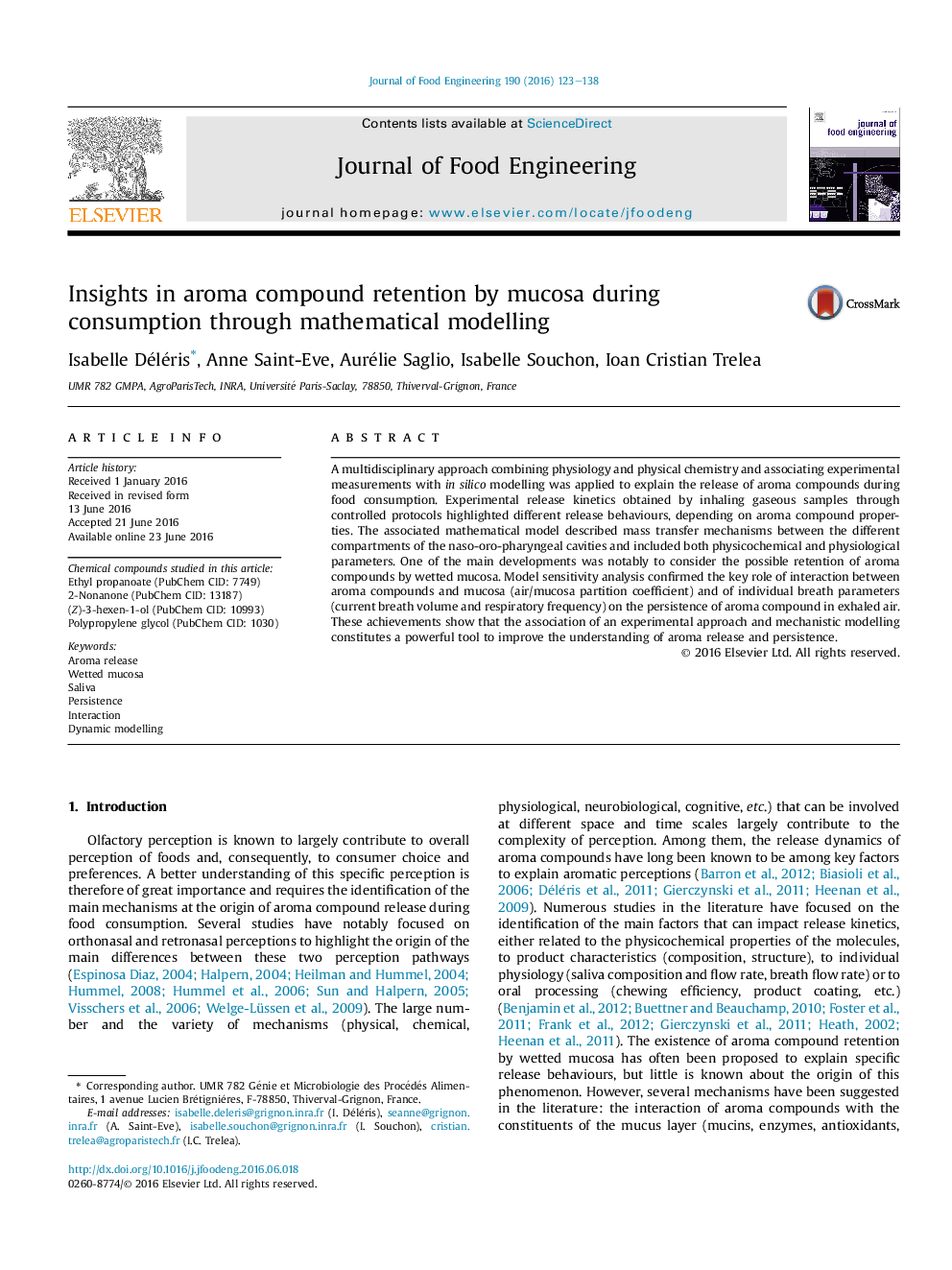| Article ID | Journal | Published Year | Pages | File Type |
|---|---|---|---|---|
| 222571 | Journal of Food Engineering | 2016 | 16 Pages |
•Aroma compound persistence after gaseous sample inhalation was modelled.•Both physiological and physicochemical parameters were included in the model.•The respective contributions of wetted mucosa and saliva on release kinetics were assessed.•The major role of mucosa partition coefficients of molecules was confirmed.
A multidisciplinary approach combining physiology and physical chemistry and associating experimental measurements with in silico modelling was applied to explain the release of aroma compounds during food consumption. Experimental release kinetics obtained by inhaling gaseous samples through controlled protocols highlighted different release behaviours, depending on aroma compound properties. The associated mathematical model described mass transfer mechanisms between the different compartments of the naso-oro-pharyngeal cavities and included both physicochemical and physiological parameters. One of the main developments was notably to consider the possible retention of aroma compounds by wetted mucosa. Model sensitivity analysis confirmed the key role of interaction between aroma compounds and mucosa (air/mucosa partition coefficient) and of individual breath parameters (current breath volume and respiratory frequency) on the persistence of aroma compound in exhaled air. These achievements show that the association of an experimental approach and mechanistic modelling constitutes a powerful tool to improve the understanding of aroma release and persistence.
